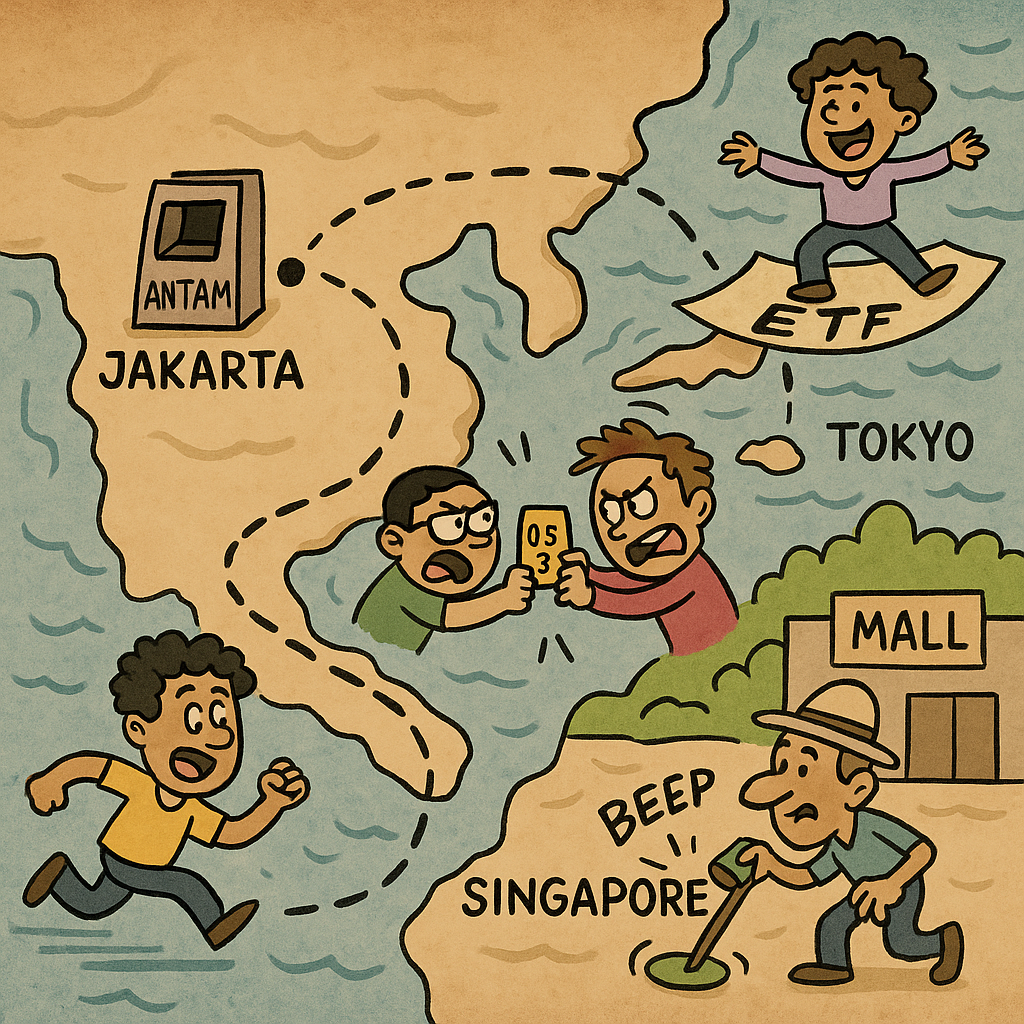Dopamine Now, Savings Later: Welcome to the Microjoy Economy
Dopamine Now, Savings Later: Welcome to the Microjoy Economy


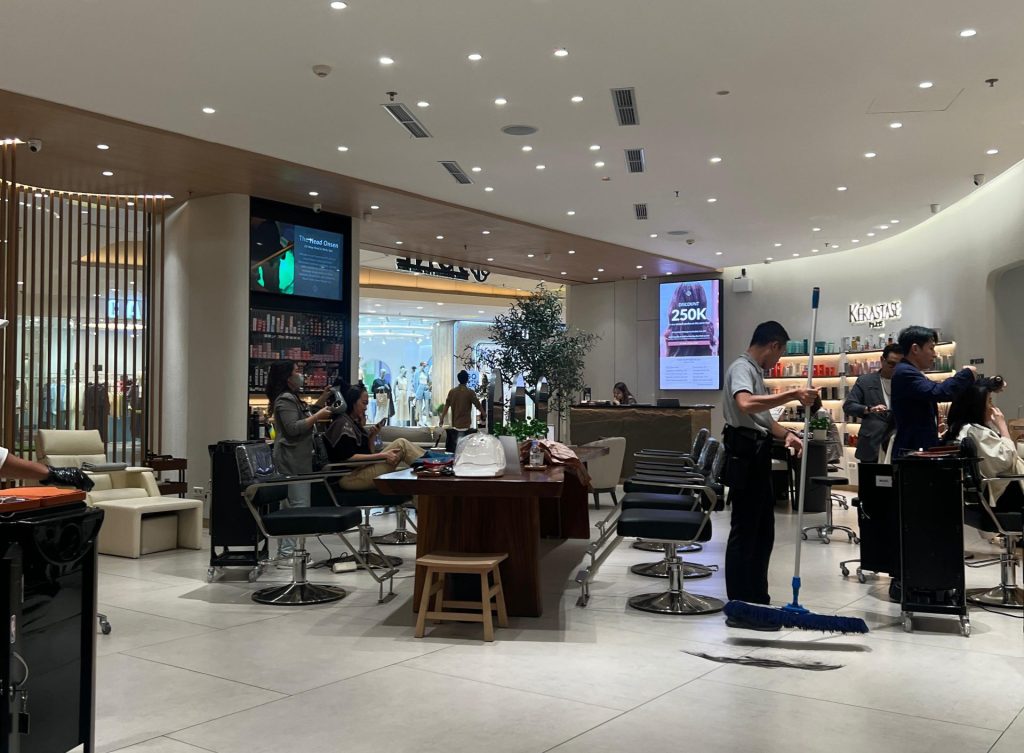
Salon in a high premium mall in Central Jakarta. 1pm on Saturday. I should be seeing the last chair being fought over at this point
The salon was empty. On a weekend.
So empty, in fact, that they started offering happy hour promos on a Saturday—a time usually reserved for weddings, reunions, and revenge glow-ups.
When I asked the staff what was going on, she shared: “It’s only busy now during weekday lunch… and it’s mostly just shampoo and blow-dry. No more exclusive packages.”
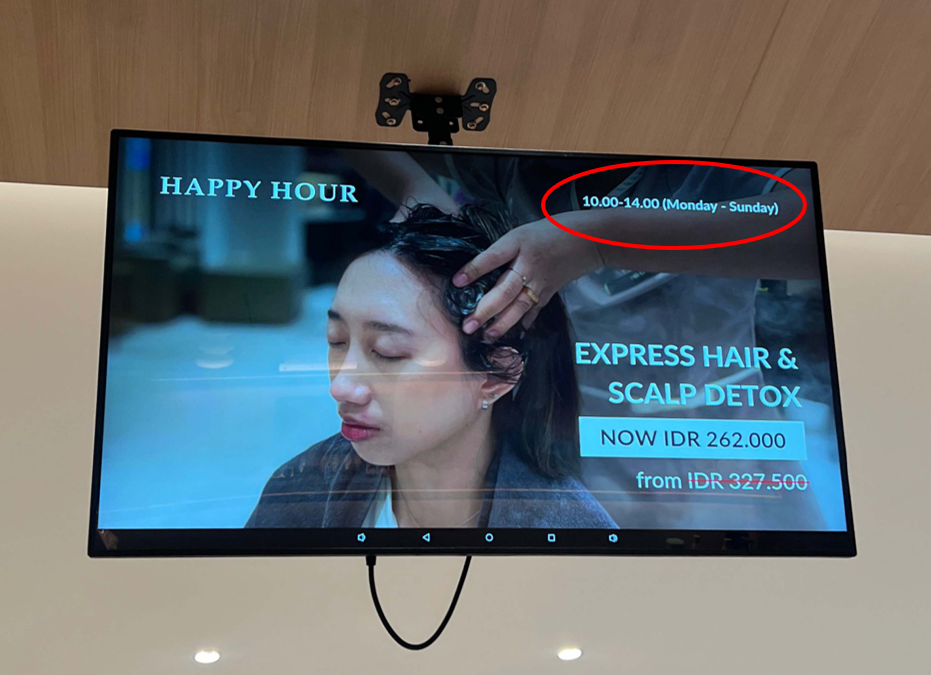
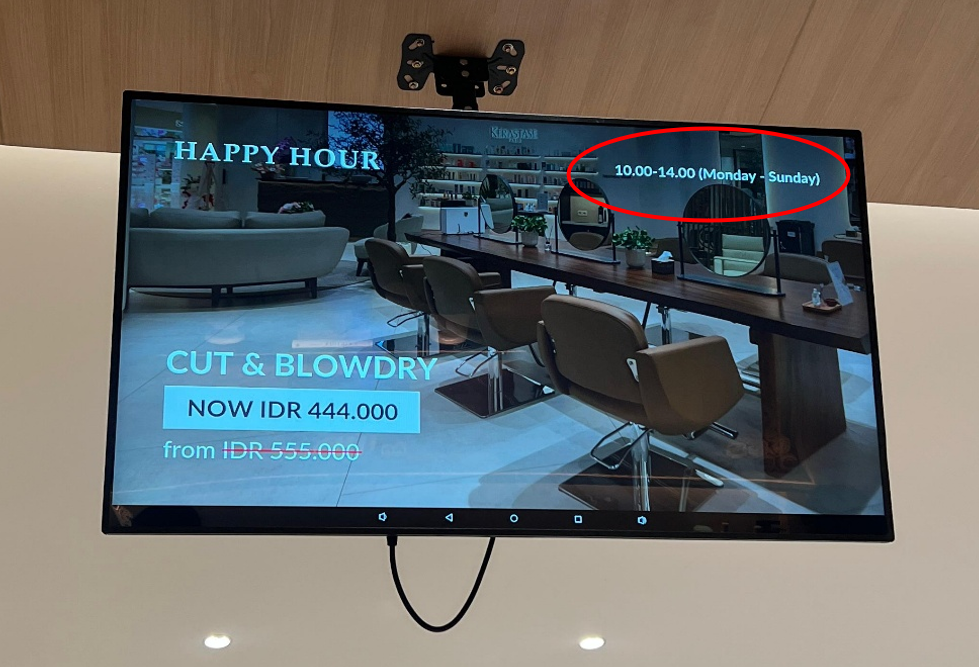
Doth my eyes deceive me? Monday TO Sunday??
If the best indicator of consumer confidence could be measure by our hair, then it seems the mood has shifted from “treat yourself” to “just trim the split ends”.
On the ground, we’ve also seen another curious signal: a cigarette ad promising: “40% longer lasting.” It’s a strange pitch, but a telling one. The message isn’t about taste or image. It’s about duration.
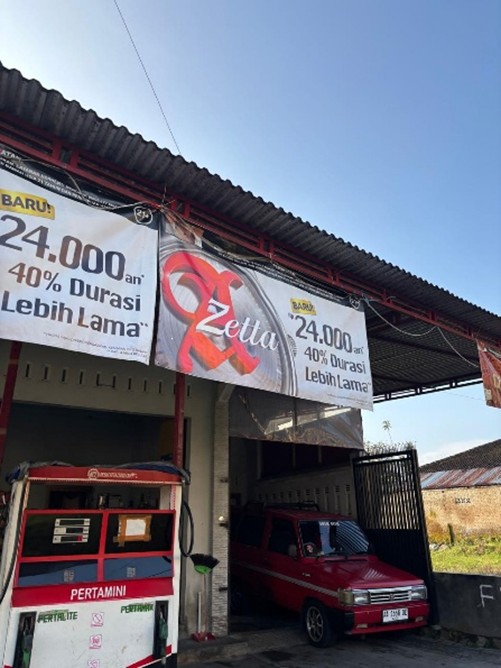
In other words: We know you’re saving. Let us help you savor
These are not just quirky moments. They are hints of how people are recalibrating their spending.
Some data points:
- Eid holiday travel dropped 24%.
- Ramadan’s usual consumption boost never materialized.
- Sales growth for food, beverage, and tobacco? Just 1.3%—down from 7.5% last year.
- Fuel consumption dipped 1.1% during Eid.
- Debit card transactions declined 4%, while credit card growth slowed notably.
But this isn’t a tale of retreat. It’s one of reinvention.
This is Global
Look beyond Indonesia and you’ll see the same trend lines forming.
In the U.S., credit card delinquencies are creeping toward pandemic-era highs. Klarna—the “Buy Now, Pay Later” poster child—saw its losses double. Nearly half of its users paid late last year; a quarter used it for groceries.

Source: The New York Times
Consumption persists, yes—but often at the cost of savings and future spending. The mood isn’t “fear,” it’s focus. On essentials, on efficiency, and yes—on small, meaningful indulgences.
The Labubu Logic: Why Small Splurges are Big Business
We’re not seeing the end of spending—we’re seeing the evolution of how people choose to spend.
From flashy, high-ticket purchases to lower-cost, higher-yield experiences. From conspicuous consumption to curated comfort.
Because when the future feels hazy, people hold tight to the small things they can control: a quick treat, a satisfying purchase, a moment of delight.
Somewhere between coping and collecting, Labubu Version 3 dropped. With its ombré sparkle and limited availability, it sold out instantly. For many, it wasn’t just a toy—it was a moment of joy, a small win in a time when big wins feel delayed.
Labubu is more than a figurine. It’s the mascot of the Microjoy Economy.

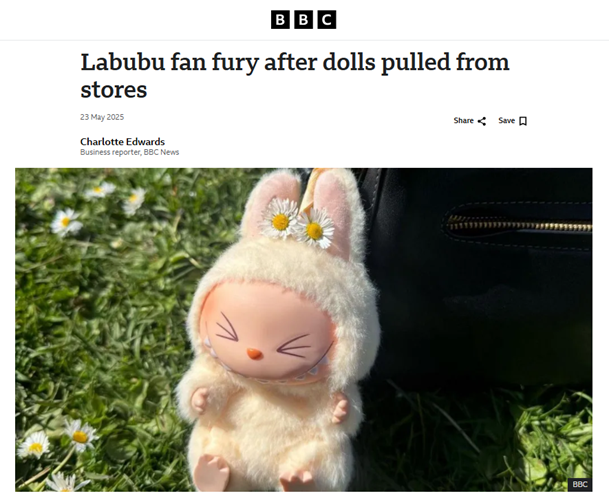
Labubu fans flying to Singapore to get the “Merbubu” exclusive collection. In the UK, some stores had to pause selling because the crowds got too intense
If you squint past the glitter, you’ll see something quietly profound: even when wallets tighten, the need for joy doesn’t disappear. It just finds smaller vessels.
This isn’t irrational. It’s adaptive. A concept economists once called the Lipstick Index—resilient demand for small luxuries during downturns—now has a Gen Z upgrade. Call it Lipstick 2.0 or the Microjoy Index:
- Boba tea over Birkin bags
- a cold whisked matcha over Gucci
- Labubu over long-term planning
These aren’t just trends. They’re emotional hedges. Consumers are engineering their own sense of resilience through affordable indulgence, building a decentralized joy system from the bottom up.
Because when control over the macro feels distant, taking command over a tiny purchase—or ripping open a mystery box—feels like reclaiming something. You can say it’s hedonic risk management with a splash of TikTok sparkle.
Indonesia is Built for This Moment: The Story of Ci Mehong
Indonesia’s consumption culture and demographics make it a prime landscape for this trend:
- Young, mobile-first population
- Familiarity with digital scarcity (e.g. flash sales, hype drops)
- Cultural lean-in to collecting, limited editions, and bite-sized luxury
Rather than pulling back, many consumers are simply changing course with GJP (Gross Joy Product) is rising towards purchases that feel more personal, rewarding, and shareable.
Take Ci Mehong, the viral entrepreneur behind PIK Baking House.
She started with holding baking classes. Then she pivoted—fast. Now she sells premium snacks (think bika ambon and lapis legit), imported fruit, even exclusive cemetery land. All infused with her trademark spunky attitude.
Her secret? Presence. Daily videos, viral challenges, and a direct connection to 700K+ loyal followers. She built not just a product line, but a culture of inclusiveness. A space where high prices feel less intimidating when delivered with flair.
And it works. Not in spite of the times, but because of them. Her success story exemplifies how innovation and adaptability can thrive, even in challenging economic times.



Her secret recipe? Videos of her doing various viral challenges like toppling buckets of butter, daily home cooking and dress shopping achieving that “casual relatable feel” whilst keeping her sassy attitude
Final Thought: Small is the New Smart
We began this story in a salon—eerily quiet on a Saturday.
We passed a cigarette ad selling longevity over luxury.
We ended up with a glittering goblin-like toy named Labubu, a reminder that joy doesn’t have to be expensive—it just needs to be engineered right.
The consumer hasn’t disappeared. They’ve just reallocated.
From splurging on big-ticket aspirations… to investing in small, high-yield feelings.
For investors, this is a map—pointing toward the companies that understand the moment:
✅ Those that package presence, not just product.
✅ Those that master scarcity and storytelling, not just shelf space.
✅ Those that live natively in mobile culture, where virality converts faster than footfall.
This isn’t a downturn. It’s a design brief.
The next wave of winners won’t be those who wait for a rebound in old spending habits—
But those who ride the microjoy wave with precision, playfulness, and presence.
Tara Mulia
Admin heyokha
Share

Salon in a high premium mall in Central Jakarta. 1pm on Saturday. I should be seeing the last chair being fought over at this point
The salon was empty. On a weekend.
So empty, in fact, that they started offering happy hour promos on a Saturday—a time usually reserved for weddings, reunions, and revenge glow-ups.
When I asked the staff what was going on, she shared: “It’s only busy now during weekday lunch… and it’s mostly just shampoo and blow-dry. No more exclusive packages.”


Doth my eyes deceive me? Monday TO Sunday??
If the best indicator of consumer confidence could be measure by our hair, then it seems the mood has shifted from “treat yourself” to “just trim the split ends”.
On the ground, we’ve also seen another curious signal: a cigarette ad promising: “40% longer lasting.” It’s a strange pitch, but a telling one. The message isn’t about taste or image. It’s about duration.

In other words: We know you’re saving. Let us help you savor
These are not just quirky moments. They are hints of how people are recalibrating their spending.
Some data points:
- Eid holiday travel dropped 24%.
- Ramadan’s usual consumption boost never materialized.
- Sales growth for food, beverage, and tobacco? Just 1.3%—down from 7.5% last year.
- Fuel consumption dipped 1.1% during Eid.
- Debit card transactions declined 4%, while credit card growth slowed notably.
But this isn’t a tale of retreat. It’s one of reinvention.
This is Global
Look beyond Indonesia and you’ll see the same trend lines forming.
In the U.S., credit card delinquencies are creeping toward pandemic-era highs. Klarna—the “Buy Now, Pay Later” poster child—saw its losses double. Nearly half of its users paid late last year; a quarter used it for groceries.

Source: The New York Times
Consumption persists, yes—but often at the cost of savings and future spending. The mood isn’t “fear,” it’s focus. On essentials, on efficiency, and yes—on small, meaningful indulgences.
The Labubu Logic: Why Small Splurges are Big Business
We’re not seeing the end of spending—we’re seeing the evolution of how people choose to spend.
From flashy, high-ticket purchases to lower-cost, higher-yield experiences. From conspicuous consumption to curated comfort.
Because when the future feels hazy, people hold tight to the small things they can control: a quick treat, a satisfying purchase, a moment of delight.
Somewhere between coping and collecting, Labubu Version 3 dropped. With its ombré sparkle and limited availability, it sold out instantly. For many, it wasn’t just a toy—it was a moment of joy, a small win in a time when big wins feel delayed.
Labubu is more than a figurine. It’s the mascot of the Microjoy Economy.


Labubu fans flying to Singapore to get the “Merbubu” exclusive collection. In the UK, some stores had to pause selling because the crowds got too intense
If you squint past the glitter, you’ll see something quietly profound: even when wallets tighten, the need for joy doesn’t disappear. It just finds smaller vessels.
This isn’t irrational. It’s adaptive. A concept economists once called the Lipstick Index—resilient demand for small luxuries during downturns—now has a Gen Z upgrade. Call it Lipstick 2.0 or the Microjoy Index:
- Boba tea over Birkin bags
- a cold whisked matcha over Gucci
- Labubu over long-term planning
These aren’t just trends. They’re emotional hedges. Consumers are engineering their own sense of resilience through affordable indulgence, building a decentralized joy system from the bottom up.
Because when control over the macro feels distant, taking command over a tiny purchase—or ripping open a mystery box—feels like reclaiming something. You can say it’s hedonic risk management with a splash of TikTok sparkle.
Indonesia is Built for This Moment: The Story of Ci Mehong
Indonesia’s consumption culture and demographics make it a prime landscape for this trend:
- Young, mobile-first population
- Familiarity with digital scarcity (e.g. flash sales, hype drops)
- Cultural lean-in to collecting, limited editions, and bite-sized luxury
Rather than pulling back, many consumers are simply changing course with GJP (Gross Joy Product) is rising towards purchases that feel more personal, rewarding, and shareable.
Take Ci Mehong, the viral entrepreneur behind PIK Baking House.
She started with holding baking classes. Then she pivoted—fast. Now she sells premium snacks (think bika ambon and lapis legit), imported fruit, even exclusive cemetery land. All infused with her trademark spunky attitude.
Her secret? Presence. Daily videos, viral challenges, and a direct connection to 700K+ loyal followers. She built not just a product line, but a culture of inclusiveness. A space where high prices feel less intimidating when delivered with flair.
And it works. Not in spite of the times, but because of them. Her success story exemplifies how innovation and adaptability can thrive, even in challenging economic times.



Her secret recipe? Videos of her doing various viral challenges like toppling buckets of butter, daily home cooking and dress shopping achieving that “casual relatable feel” whilst keeping her sassy attitude
Final Thought: Small is the New Smart
We began this story in a salon—eerily quiet on a Saturday.
We passed a cigarette ad selling longevity over luxury.
We ended up with a glittering goblin-like toy named Labubu, a reminder that joy doesn’t have to be expensive—it just needs to be engineered right.
The consumer hasn’t disappeared. They’ve just reallocated.
From splurging on big-ticket aspirations… to investing in small, high-yield feelings.
For investors, this is a map—pointing toward the companies that understand the moment:
✅ Those that package presence, not just product.
✅ Those that master scarcity and storytelling, not just shelf space.
✅ Those that live natively in mobile culture, where virality converts faster than footfall.
This isn’t a downturn. It’s a design brief.
The next wave of winners won’t be those who wait for a rebound in old spending habits—
But those who ride the microjoy wave with precision, playfulness, and presence.
Tara Mulia
Admin heyokha
Share






